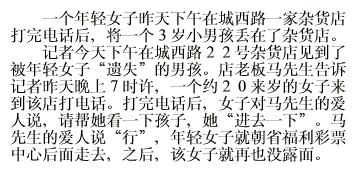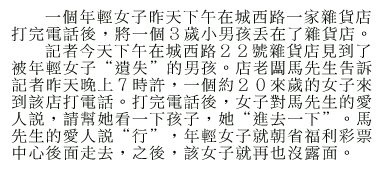The Chinese
Writing System
How Characters are actually used to write Chinese
Chinese characters have a mystique that fascinates Chinese and non-Chinese alike. Admired for their beauty and the meanings (such as 'virtue' or 'sincerity') that they represent, characters tend to be regarded as objects worthy of study in themselves. Unfortunately, this obscures the fact that they are essentially a method of representing language. Here we look at how modern Chinese (Mandarin) is represented by its writing system.
GENERAL
Chinese characters (known in Chinese as 漢字 hànzì, in simplified characters 汉字) have a very long history. Their earliest known form, found on 'oracle bones' dating back over 3,000 years, was already a fully developed system
of writing. The current form of the characters, based on brush and ink, dates from the fourth century AD.
At the time of the Han dynasty (202 BC - AD 220) there were over 9,000 characters. The number grew steadily over the centuries as more and more characters were coined. Today upwards of 50,000 characters have been recorded, although many are simply variants. Around 7,000 characters are actually in use in the modern language, of which only about 3,000-4,000 are needed to read books and newspapers. The creation of new characters has effectively ceased and it is unlikely that many will be added to the current stock.
In the 20th century, China simplified the traditional characters extensively in order to promote literacy. These simplified characters are used in Mainland China and Singapore, but the traditional characters are still used in Taiwan and Hong Kong. This page shows the traditional characters, but the simplified form is also shown.
Besides Chinese characters, modern Chinese also uses some elements borrowed from the West, such as Roman letters, Arabic numerals, and Western punctuation. There is also a system of phonetic symbols, informally known as bo
po mo fo, created in the early 20th century and still used for limited purposes in Taiwan (e.g., indicating pronunciation in children's books). It has largely been abandoned on the Mainland.
The following is a sample of printed Chinese, an extract from a newspaper article, rendered in both simplified and traditional characters. Simplified characters are on top, traditional below. (Traditional characters more generally run up and down the page. Unfortunately I don't have the software to reproduce that effect.) The article is about the abandonment of a 3-year old boy in Haikou.
Notice that each character stands as a discrete unit, a self-contained form within an imaginary square box. There are also cursive styles of brush-writing where characters flow together freely and gracefully and the size of characters varies.
Unlike English, where a line of text is separated by spaces into individual words, Chinese text is interrupted only by punctuation marks.
The following pages look at some of the characteristics of Chinese
characters.
For more information on the Chinese writing system, see Links.
See also the Japanese Writing
System and the Vietnamese
Writing System.

